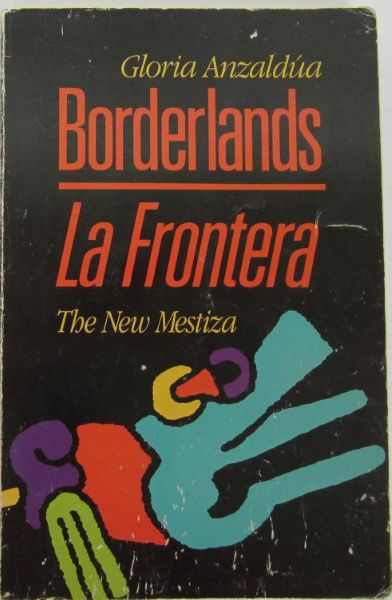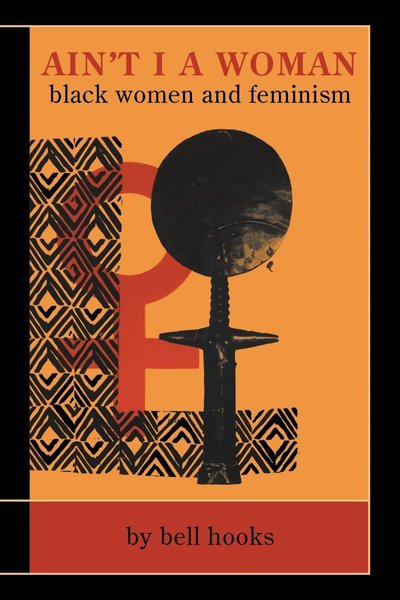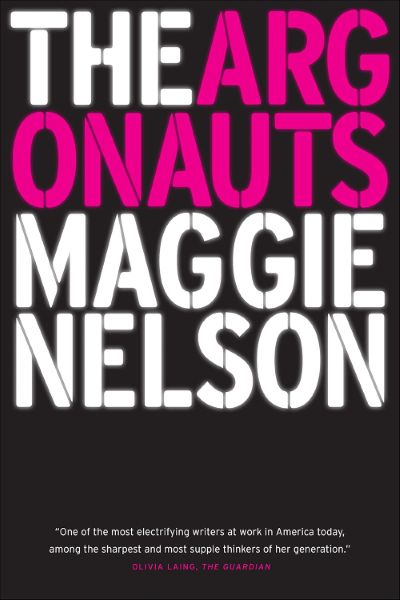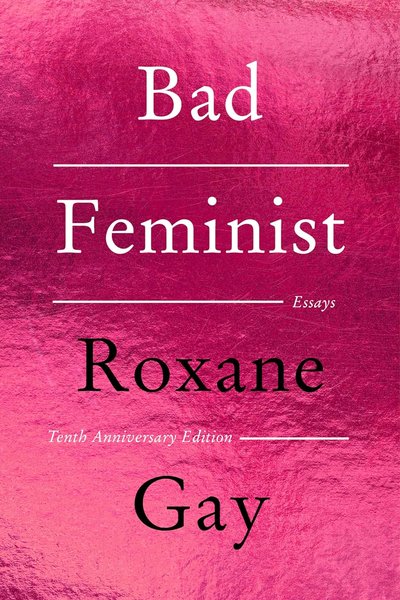Borderlands/La Frontera: The New Mestiza
This groundbreaking semi-autobiographical work explores Mexican-American women's border identity through a blend of poetry and prose. Anzaldúa introduces the concept of 'new mestiza consciousness,' challenging traditional binary thinking and understanding borders as psychological, social, and cultural hybrid zones.

📝 Book Review
In 1987, Gloria Anzaldúa’s “Borderlands/La Frontera: The New Mestiza” burst onto the scene like the scorching sun of the U.S.-Mexico border, illuminating with fierce and undeniable intensity the obscured experiences of border existence. This work, blending personal narrative, historical analysis, poetry, and theoretical reflection, not only redefined the concept of “borders” but provided a revolutionary framework for understanding identity, culture, and resistance. As a Chicana, lesbian, activist, and writer, Anzaldúa created a new epistemology and political practice from her unique multi-positioned perspective. Named one of the 38 best books of 1987 by Library Journal and one of the 100 Best Books of the Century by both Hungry Mind Review and Utne Reader, this work profoundly influenced the development of Chicana/o studies, feminist theory, and postcolonial studies.
Anzaldúa’s writing emerges from deep roots in the complex reality of the U.S.-Mexico border. She was born in South Texas’s Rio Grande Valley, a land that has witnessed centuries of territorial disputes, cultural conflicts, and population movements between Mexico and the United States. Here, geographical boundaries divide not only land but also people’s identities, languages, and sense of belonging. From childhood, Anzaldúa lived at the intersection of multiple languages and cultures, experiencing the manifold marginalizations of being Mexican-American, female, and lesbian. This lived experience was not abstract theoretical material but the embodied daily reality of identity negotiation and cultural translation.
The Border as Epistemological Space: A Revolutionary Reconstruction
Anzaldúa’s theorization of the “border” constitutes this work’s core contribution, fundamentally overturning traditional understandings of boundaries. In her writing, borders are no longer merely lines on maps or divisions between nations but vibrant spaces full of contradiction and creative potential. She writes: “The Borderlands are the geographical area most susceptible to hybridity, neither fully of Mexico nor fully of the United States.” This reconceptualization of borders carries profound theoretical significance.
The border becomes an epistemological metaphor, challenging the deeply rooted binary thinking in Western thought. In traditional epistemological frameworks, the world is divided into either/or categories: civilized versus savage, rational versus emotional, male versus female, white versus colored. But in Anzaldúa’s border theory, these binary oppositions dissolve. Borders are not simple divisions between “here” and “there,” “us” and “them,” but rather psychological, social, and cultural zones that we inhabit and that inhabit us. It is a third space where contradictions coexist, identities flow, and cultures mix.
For people living on the U.S.-Mexico border, particularly Mexican-American women, this border experience has concrete and painful reality. They must navigate between multiple languages—English, standard Spanish, Chicano Spanish, Tex-Mex. They must negotiate between different cultural value systems—American individualism and Mexican collectivism, Catholic tradition and secular modernity, Indigenous heritage and Western civilization. While this daily cultural crossing is challenging and painful, it also nurtures a unique epistemological perspective and creative potential.
New Mestiza Consciousness: Revolutionary Thinking Beyond Binary Opposition
Anzaldúa’s concept of “new mestiza consciousness” represents a fundamental challenge to traditional epistemology, representing an entirely new way of thinking and being. She writes: “From this racial, ideological, cultural and biological cross-pollination, an ‘alien’ consciousness is presently in the making—a new mestiza consciousness, una conciencia de mujer. It is a consciousness of the Borderlands.”
The revolutionary nature of new mestiza consciousness lies in its fundamental acceptance of contradiction. Traditional Western logic demands clear categories and definite positions, but the new mestiza learns to tolerate contradiction and ambiguity. She no longer needs to choose between multiple identities, no longer needs to deny parts of herself to gain acceptance. Instead, she can simultaneously maintain multiple identities and perspectives, finding space for survival and creation between seemingly irreconcilable opposites. This ability is not innate but emerges from the daily practice of border existence, a necessary skill for surviving on the frontlines of cultural conflict.
This consciousness innovatively breaks the binary oppositional structure in Western thought. Male versus female, white versus black, rational versus emotional, civilized versus savage—these seemingly natural categories are revealed as artificial constructs, products of power relations rather than reflections of natural order. New mestiza consciousness doesn’t simply invert these hierarchies but completely transcends binary thinking itself. She demonstrates the artificiality and oppressive nature of these categories, revealing how they limit our thinking and existence.
When facing cultural conflicts, the new mestiza’s strategy is not to choose sides but creative synthesis. She draws nourishment from different cultural traditions, creating new cultural forms and survival strategies. This creation is not simple cultural collage but deep cultural alchemy, producing cultural practices that belong neither here nor there but are entirely novel. This creative synthesis manifests in language use, artistic expression, social relations, and all aspects of daily life.
Language as Tool of Resistance: The Political Practice of Multilingualism
One of “Borderlands’” most striking features is its radical linguistic practice. Anzaldúa freely switches between English, standard Spanish, Chicano Spanish, Tex-Mex, Nahuatl, and other languages, creating a unique multilingual text. This code-switching far exceeds the level of literary technique, becoming a profound political act.
By refusing the hegemony of a single language, Anzaldúa embodies the complexity and fluidity of border identity. In mainstream academic writing, linguistic “purity” is considered a mark of academic rigor, while mixed languages are seen as unprofessional. But Anzaldúa challenges this linguistic purism, insisting on using mixed languages to express the authenticity of hybrid identity. This linguistic practice itself is resistance against colonialism and linguistic imperialism.
She writes profoundly: “Ethnic identity is twin skin to linguistic identity—I am my language. Until I can take pride in my language, I cannot take pride in myself.” This affirmation of multilingual identity carries deep political significance. It challenges the oppression of monolingualism and provides a powerful defense for the linguistic rights of marginalized groups. In a society that treats “standard” English as a marker of civilization and education, insisting on using denigrated language varieties is a radical political stance.
Anzaldúa’s linguistic practice also reveals the deep relationship between language and power. Who has the right to define “correct” language? Whose language is considered valuable, and whose is dismissed as “dialect” or “vernacular”? These questions concern not just linguistics but political economy and cultural hegemony. By creating a literary form of mixed languages, Anzaldúa not only expresses border experience but creates a new language for expressing that experience.
Critical Deconstruction of Mexican Cultural Patriarchy
While Anzaldúa deeply loves her Mexican cultural heritage, she never avoids sharp criticism of its patriarchal elements. The courage and depth of this critique elevate her work beyond simple cultural celebration or nostalgia to become genuine critical analysis.
She analyzes in detail how machismo in Mexican and Chicano culture systematically oppresses women. This oppression operates through multiple mechanisms: strict gender role norms requiring women to be submissive, silent, self-sacrificing; women’s value confined to roles as daughters, wives, and mothers; women’s sexuality strictly controlled, with chastity as the core measure of female worth; women expected to obey male authority—first fathers, then husbands, finally sons.
For lesbians, this oppression is even more severe and complex. Anzaldúa narrates with extremely personal and painful detail the multiple marginalizations faced by Chicana lesbians. They are rejected not only by mainstream white society but also by their own ethnic communities. In Mexican culture, lesbians are seen as a fundamental threat to traditional gender order, accused of betraying their culture, becoming victims or imitators of white culture. This rejection from one’s own community is often more painful than external discrimination.
However, Anzaldúa’s critique possesses profound complexity. She recognizes that Mexican cultural patriarchy cannot be understood in isolation but must be placed in the context of colonial history. Spanish colonialism destroyed the relatively egalitarian gender relations in Indigenous societies, imposing extreme patriarchy. Later Anglo racism further emasculated Mexican men, leading to compensatory machismo. Therefore, opposing patriarchy must simultaneously oppose racism and colonialism, must understand how these oppressive systems mutually reinforce each other.
Goddess Coatlicue and the Revival of Female Spiritual Power
Anzaldúa’s reinterpretation of the Aztec goddess Coatlicue forms an important component of her theoretical innovation. Coatlicue is the goddess of life and death, creation and destruction, embodying the unity of opposites. By reviving this goddess figure suppressed for centuries by patriarchy and Christianity, Anzaldúa reconnects with pre-colonial traditions of female power.
In Anzaldúa’s interpretation, Coatlicue is not merely a mythological figure but a state of consciousness and spiritual practice. The Coatlicue state represents a process of psychological and spiritual transformation. In this state, one must face inner shadows and fears, experiencing spiritual death and rebirth. This is a painful but necessary process through which the new mestiza can integrate her fragmented self and reach new levels of consciousness.
This introduction of spiritual dimension elevates Anzaldúa’s feminism beyond purely political analysis to become a holistic liberation practice. She demonstrates how female sacred power in Indigenous cultures was systematically destroyed by colonialism—female deities demonized, female spiritual leaders persecuted, women’s religious knowledge erased. Recovering this spiritual heritage is not just a matter of cultural revival but a core task of decolonization. By reconnecting with severed spiritual traditions, the new mestiza finds sources of strength for resistance.
Body Politics and Sexual Liberation: Embodied Theoretical Practice
Anzaldúa places the body—particularly female, colored, and queer bodies—at the center of theory. She rejects the Western philosophical tradition of mind/body dualism, insisting on embodied knowledge and embodied theory. In her theoretical framework, the body is not a container for thought but a site of knowledge production.
She openly and courageously discusses her sexuality and desires, which was extremely radical in 1980s academic writing. By writing about lesbian desire and pleasure, she not only speaks for marginalized sexual minorities but challenges heteronormative control over knowledge production. She demonstrates how sexuality is racialized and classed, how it becomes a site of both control and liberation.
Anzaldúa’s body politics also includes profound analysis of racialized bodies. She explores how women of color’s bodies are objectified, alienated, and sexualized by the colonial gaze. Mexican women’s bodies are constructed as excessively sensual, dangerous, needing control. This construction affects not only how others see them but how they understand themselves. By reclaiming narrative authority over her own body, Anzaldúa performs a profound decolonization practice.
The Dialectical Relationship Between Trauma and Healing
Anzaldúa deeply explores the traumatic nature of border existence. Living on the frontlines of cultural conflict, constantly facing racism, sexism, and homophobia creates profound and lasting psychological trauma. She describes “intimate terrorism”—rejection and violence from one’s own family and community, trauma often deeper than external discrimination.
However, Anzaldúa’s unique contribution lies in showing how trauma can be transformed into strength. Through facing and integrating traumatic experiences, the new mestiza develops unique resilience and insight. This process from trauma to healing is not individual psychotherapy but collective political practice. It requires community support, cultural resources, and political action.
Healing also requires reconnecting with severed cultural roots. Colonialism destroyed not only material culture but also spiritual and emotional continuity. Anzaldúa emphasizes the importance of decolonizing memory—recovering erased history, forbidden languages, suppressed spiritual traditions. This recovery of cultural memory is not nostalgia but provides resources and inspiration for contemporary struggles.
Theoretical Legacy and Contemporary Significance
“Borderlands” has had profound and lasting impact on multiple academic fields. In Chicana/o studies, the book became a foundational text, inspiring extensive research on hybrid identity, border culture, and Chicana feminism. It provided theoretical frameworks for understanding the complex reality of the U.S.-Mexico border, influencing research methods in history, anthropology, sociology, and other disciplines.
In feminist theory, Anzaldúa’s work expanded feminism’s theoretical horizons, placing race, culture, language, and geography at the core of gender analysis. Her intersectional analysis, though not using that term, anticipated and influenced the later development of intersectionality theory. She demonstrated how different forms of oppression mutually constitute each other, requiring comprehensive analytical frameworks.
In queer theory, her exploration of gender and sexual fluidity made important contributions to queer theory’s development. She challenged fixed identity categories, demonstrating identity’s performativity and fluidity. Her work influenced theorists like Judith Butler’s thinking about gender performativity.
In postcolonial studies, border theory and the concept of hybrid consciousness became important tools for understanding postcolonial identity. Her work dialogues with Homi Bhabha’s “third space” theory, Stuart Hall’s cultural identity theory, and others, enriching postcolonial theory’s conceptual tools.
Conclusion: The Border as Space of Hope
Gloria Anzaldúa’s “Borderlands/La Frontera” is not merely a work about Mexican-American experience but an epistemological revolution. By reconceptualizing borders, identity, and consciousness, she provides new theoretical frameworks and practical paths for understanding and resisting multiple oppressions.
New mestiza consciousness is not about choosing sides but about inhabiting contradictions, transforming oppositions, creating new possibilities. This consciousness belongs not exclusively to mestizas but is a common resource for all who live on borders—whether geographical, cultural, gender, or sexual borders. It provides tools for navigating an increasingly complex and interconnected world.
Anzaldúa’s legacy lies in showing how margins can become centers, trauma can become strength, and differences can become bridges. In a world where borders grow increasingly rigid and divisions deepen, her border vision—as a space for encounter, transformation, and creation—remains full of hope and revolutionary possibility. “Borderlands” ultimately calls to all who cross, inhabit, and transform borders, inviting them to embrace the creativity of hybridity, build solidarity across differences, and create a more inclusive and just world. In this vision, borders are no longer tools of separation and exclusion but become spaces of connection and creation, sites where new worlds are born.
Book Info
Related Topics
🛒 Get This Book
 Buy on Amazon
Buy on Amazon Related Books
Book Discussion
Share your thoughts and opinions on this book and exchange insights with other readers
Join the Discussion
Share your thoughts and opinions on this book and exchange insights with other readers
Loading comments...


